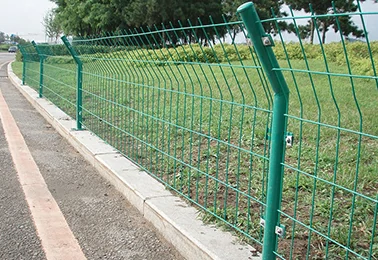 TEL:
+86-13102802206
TEL:
+86-13102802206
 Email:
fencenetting@china.com
Email:
fencenetting@china.com
 Language
Language
 TEL:
+86-13102802206
TEL:
+86-13102802206
 Email:
fencenetting@china.com
Email:
fencenetting@china.com
 Language
Language


Installing a Temporary Fence A Step-by-Step Guide
When it comes to securing a construction site, an event venue, or any area that requires restricted access, installing a temporary fence is an effective and practical solution. Temporary fencing not only provides security but also helps manage crowd control and keeps the area organized. Here’s a step-by-step guide to ensure a successful installation.
1. Determine Your Needs
Before you begin, assess the purpose of the fence. Are you securing a construction site, hosting a public event, or preventing unauthorized access to an area? Identifying your needs will help you select the right type of temporary fencing, such as chain link, mesh panels, or barricades.
2. Check Local Regulations
Before installation, it’s crucial to check local laws and regulations regarding temporary fencing. Some areas may require permits, and specific guidelines may dictate the height, materials, or placement of the fence. Adhering to these regulations will prevent potential fines or need for removal.
3. Measure the Area
Next, measure the perimeter of the area you want to fence. This will help you determine how many panels or sections you’ll need. Ensure your measurements are accurate; this will save time and resources during installation. Marking the ground with stakes or chalk can help visualize the layout.
4. Select the Right Fencing

Choose the type of temporary fence that suits your needs best. For example, chain-link is durable and provides visibility, while solid panels offer privacy and wind protection. Consider factors like height, material, and ease of installation when making your selection.
5. Gather Your Tools and Materials
Prepare all the necessary tools and materials before you start. Common tools include a post driver, level, and safety gear such as gloves and goggles. Ensure you have all panels, stabilizing weights, and connectors on hand for a smooth installation process.
6. Install the Fence
Begin installing the fence by placing the first panel in position. Use the post driver to secure the panels into the ground, making sure they are level. Connect each panel securely, ensuring stability and strength. Repeat this process around the entire perimeter.
7. Inspect the Installation
Once all panels are in place, conduct a thorough inspection. Check for any gaps, ensure that the fence is correctly aligned, and verify that it is secure. Making necessary adjustments before using the site will guarantee safety and effectiveness.
Conclusion
Installing a temporary fence is a straightforward process that enhances safety and organization in various settings. By following these steps, you can effectively secure your area, ensuring peace of mind for all involved. Whether for a short-term project or a long-term operation, a well-installed temporary fence is an invaluable asset.